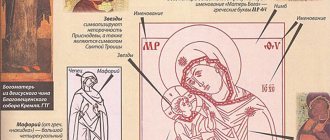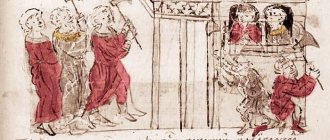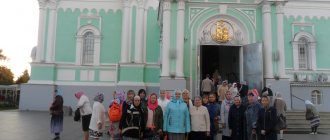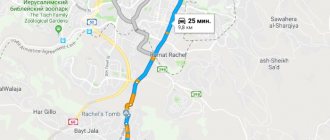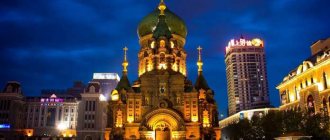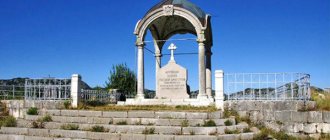Diveevo is a small village in the Nizhny Novgorod region, founded back in 1559. One of the common versions of its name says that the name of the village was given by the Nogai Murza Divey. He was the first owner of these places. Almost two centuries later, his descendants converted to Christianity. And Orthodox communities, churches, and shrines began to appear on the territory of Diveevo.
Today Diveevo is one of the Christian pilgrimage centers. The village is famous for the fact that here was the monastery of St. Seraphim of Sarov.
You can get to Diveevo by car or bus from Arzamas. There are no trains going here, and the nearest airport is near Nizhny Novgorod.
If you are passing through Arzamas, read what to see here first. And just 20 kilometers from Diveevo is the interesting city of Sarov (read why you should go there).
Read about other attractions around Diveevo in the guide to the Nizhny Novgorod region.
What to see in Diveevo in one day
Diveevo and its surroundings are famous for their sites of Russian Orthodox culture. These places are associated with the names of Seraphim of Sarov and other famous saints. Believers and pilgrims strive to come here. At the beginning of the article, attractions that can be visited in 1 day are highlighted.
Holy Trinity Seraphim-Diveevo Monastery
The main pearl of Diveevo is the active convent, a center of religious culture, with which the history of the village, its modern life and tourism potential are inextricably linked. Most of the attractions are located on the territory of the monastery or associated with it.
The monastery appeared here in the second half of the 18th century. The story began in the ancient capital of Rus' - the city of Kyiv. Here, in the Florovsky Monastery, the wealthy landowner Agafya Melgunova took monastic vows; she is known monastically as Mother Alexandra. She was destined to found a monastery in the northern lands, where she went after the appearance of the image of the Mother of God. The nun headed towards the Sarov desert.
Driving through the village of Diveevo, located not far from Sarov, Alexandra stopped for a while. The Mother of God appeared to her again in a dream, ordering her to establish a monastery in this place.
St. Seraphim, who had gone through the path of spiritual enlightenment in the nearby desert, would become the patron of the Diveyevo Monastery at the beginning of the 19th century. In 1842, his name will appear in the name; after the unification of two neighboring communities, the monastery will become Seraphim-Diveevskaya.
Today the monastery is active. Several temples have been preserved on its territory, each of which is a separate attraction.
Museum of the History of the Seraphim-Diveevo Monastery in the 20th Century
In Soviet times, the fate of the monastery was difficult. It was first registered as a labor artel, and then officially closed altogether. The nuns were persecuted, but remained committed to the faith.
In 1988, restoration of the monastery began, and in 2014 a museum was opened, the main theme of which was the history of the monastery in the 20th century. The forerunner of the museum was a small exhibition in the abbot's building. The materials on which the exhibition is based were collected over 15 years. The museum tells about the families of priests, about the fates of nuns and new martyrs.
In the halls, the interiors of living rooms are recreated, and personal belongings of the nuns are presented. The museum also illuminates eras of spiritual history; one of the rooms is dedicated to Seraphim of Sarov. Nowadays the museum actually plays the role of a local history center in the village.
Royal Skete and Seraphim Stones
The Seraphim-Diveevo Monastery has several monasteries located in the surrounding area. The most famous of them is called “Tsarsky”. It was founded by novices in the 1860s on lands granted by Emperor Alexander II.
The crowned family patronized the monastery, its members often came here. The monastery began with a wooden church and outbuildings. The attention of tourists is attracted by the “Virgin Alley”, planted by nuns. This was the local tradition - each newly arrived nun planted a tree. The abbess of the monastery from the moment of its foundation was Abbess Alexandra. The woman's life ended tragically; the Soviet authorities executed her in 1927. The grave is on the grounds.
The skete is located not far from the place where Saint Seraphim of Sarov prayed; it is interesting from a natural point of view. There are unliving witnesses who preserve the memory of his stay here. We are talking about boulders of different sizes - “Seraphim Stones”.
Don't miss: 35 attractions of the Nizhny Novgorod region
Interesting places to relax with children
The sights of Diveevo can be visited with children. In addition to walking through the picturesque places of the surrounding area and swimming in the springs, you can visit the recently opened museum of Diveyevo toys and ceramics.
A very interesting museum exhibition will introduce you to the rich history of Nizhny Novgorod clay crafts, the main examples of ancient ceramic tableware, various figurines and figurines of animals and fairy-tale characters. There are thematic exhibitions dedicated to various holidays or works of art.
The museum is located on Oktyabrskaya Street 43. You can visit it any day of the week, except Mondays, from 10 to 17 hours. Master classes on clay modeling are held in the House of Culture by prior arrangement at the address: Oktyabrskaya Street 16.
Temples and churches in Diveevo
Religious sites are an important component of the village's tourist treasures. All of them, as a rule, are located on the territory of the monastery, but there are also some that can be seen in the vicinity of Diveevo.
Trinity Cathedral
The main church of the monastery is the Trinity Cathedral. Its elegant appearance is the work of the architect A. Turmyshev. The master from Nizhny Novgorod combined classicist architectural features with elements of Old Russian and Byzantine styles.
The temple appeared to the world in the second half of the 19th century; it was built from 1848 to 1875. It functioned in its original form until 1927. In Soviet times it fell into disrepair and was plundered. After the collapse of the USSR in the 1990s, the shrine was restored.
Transfiguration Cathedral
The creation of the architect A. Antonov is a temple in the Old Russian style. It was erected exactly on the eve of the revolution. It was completed in 1916, but they did not have time to equip it. The church never became a place for services; its history almost ended before it began. In Soviet times, plans were hatched to undermine the building.
Fortunately, this did not happen - after restoration in the 1990s, the cathedral finally opened its doors at the beginning of the new century. The golden-domed, richly painted inside parish became a storage place for shrines that attracted pilgrims. Here are the relics of St. Martha and Blessed Pasha of Sarov.
Blagoveshchensky cathedral
A new century building, the appearance of which on the territory of the monastery is associated with its ancient history. It is believed that the Monk Seraphim himself bequeathed to build a temple on this site. The architecture of the cathedral, erected only in 2011, embodies the spirit of Moscow Baroque of the 18th century. The temple complex, as reviews and experts say, is very similar to the Assumption Church of the Kiev Pechersk Lavra.
Kazan Cathedral
The same name as the famous St. Petersburg cathedral, the temple in Diveevo is the “first sign” in the history of the local monastery. It was decided to build it on the very spot where the Mother of God appeared to Alexandra. The architectural style is Russian Baroque.
The cathedral was first built in 1779. The current Kazan Church is the result of restoration work that took place at the beginning of the new millennium. During the Soviet era, its building housed a dormitory for technical school students.
Church of the Assumption of the Virgin Mary in the village of Suvorovo
In the Diveyevo region there is the village of Suvorovo, which is also extremely remarkable from the point of view of Orthodox culture. Previously it was called Puzo. A famous native of this village, the holy fool Dunya Shishkova, was shot in 1919 along with three other nuns - Maria and two Darias. All of them are canonized as new martyrs.
The relics of the venerable martyrs of Puzov are kept in the Church of the Assumption of the Virgin Mary - this is the main attraction of the village of Suvorov. The church has been known since 1654, when these lands belonged to the boyar Grigory Pushkin. The stone temple was erected two centuries later, in the 1840s. During Soviet times it was ordered to be destroyed. It was restored in the 1990s.
Skete of the Holy Martyrs Florus and Laurus
The Holy Diveevsky Monastery includes a monastery, which appeared in 1997, four kilometers from the main monastery, on the banks of the Lomovka River. It was erected in the place where in imperial times there was a monastery farm with outbuildings.
The illumination took place in 2005 in honor of Florus and Laurel. The Holy Great Martyrs were not chosen by chance. Thus, they gave tribute to the “roots”, because the founder of the monastery came to these lands from the Kyiv Florovsky Monastery.
Leisure
For lovers of active recreation, the equestrian club offers short instruction or full-fledged riding lessons. You can take a memorable horse ride in the saddle or ride like a breeze in a harness. In winter, people take sleigh rides here; in warmer months, they ride in an elegant carriage.
You can enjoy walking around the picturesque surroundings of the village. During the quiet hunting season, you can pick mushrooms and berries in the forest. Fishing lovers will not be left without a catch. The local river and lakes are rich in fish.
The Diveevskaya Sloboda hotel entertainment complex offers folklore performances, fun celebrations, costume performances, hot air balloon flights and various master classes on weekends.
Architectural and historical sights
Diveevo stands on the banks of the Vikenza River, not far from the city of Arzamas. The border with the neighboring region, the Republic of Mordovia, runs nearby. The settlement has been known since the middle of the 16th century. There are several versions of the origin of the name. According to the most popular one, the village is named after the first local ruler, Murza Diveya, who was given these lands by Ivan Vasilyevich the Terrible himself. In addition to temples and churches, you can see other interesting places here, such as historical and architectural monuments.
House-museum of Blessed Pasha of Sarov
On the territory of the monastery there is a small wooden house, which was the residence of the legendary figure - Saint Paraskeva. In the world, the woman’s name was Irina, she was from the Tambov region. She took monastic vows in Kyiv when she faced many trials - first the death of her husband, and then unfair accusations of theft and humiliation.
The nun was destined to live a long life - 120 years, of which she spent more than half a century in Diveyevo, settling here in 1884. Her house is the only monastery hermitage that has survived to this day from pre-revolutionary times.
Paraskeva’s room has been restored in the house-museum as it was during the saint’s life. Among the interesting exhibits is a blanket donated by Empress Alexandra Feodorovna, wife of Nicholas II. Paraskeva Ivanovna passed away in 1915. After death, the nun's relatives lived in the house.
House of Galaktionovs
Architectural and historical monuments are located in Diveevo on Sovetskaya Street. One of them is a house from the early 20th century. Its owners were two sisters - Mikhail and Ekaterina Galaktionov. The first, the eldest, took monastic vows. The structure is remarkable in that it has been preserved to us in its original form.
Dolgintseva's house
Next to the Galaktionovs’ house there is another mansion, built around the same time. An interesting and tragic story of the owner’s family is connected with it. This house was built by the wealthy and famous Muscovite Fyodor Dolgintsev, who decided to move to Diveevo with his daughter Sophia.
The man helped the monastery financially, his daughter became a monastic novice under the name Seraphim, and lived in the same house until 1927. She was persecuted by the Soviet authorities and went to Murom, where she was arrested. What happened to the woman remains unknown.
Groove of the Queen of Heaven
A memorable object and one of the main shrines of the monastery is a 775-meter-long moat. The ditch appeared here during the reign of Seraphim of Sarov. It is believed that the Mother of God appeared to the Reverend - a ditch was dug along the path along which she passed. Hence the name - the groove of the Queen of Heaven.
Hotels
In the village there are several hotels of different levels, a pilgrimage center, and apartments, so there shouldn’t be any problems with spending the night.
Guest House Blagovest
On East Street 22 there is a cozy small guest house with a children's playground and free parking. Guests have access to a shared equipped kitchen, barbecue facilities, an outdoor dining area and a spacious patio. You can rent a room for a price starting from 1.4 thousand rubles.
Guest House on Pokrovskaya 22
Accommodation in a double room in a guest house with a shared bathroom and equipped kitchen will cost about 1.3 thousand rubles. Convenient location next to the cafe, 15 min. walk from the bus station.
It offers a spacious terrace. Transfer from the airport can be arranged.
Guest House Planet
A modern small hotel on Arzamasskaya Street 62A offers comfortable accommodation in rooms with a private bathroom and all amenities. Guests are offered relaxation in a common lounge area, free internet connection, and transfer.
The rooms have a dining area with an electric kettle and refrigerator, cable TV and free toiletries and toiletries. The cost of placement is from 2.5 thousand rubles.
Natural monuments and holy springs
The glory of the Diveyevo holy springs spread throughout Russia. No one knows their exact number - they appear and then suddenly disappear in different places in the village of Diveevo and nearby. According to legend, they appear where Seraphim of Sarov passed at different times.
Source of Seraphim of Sarov
The source of Seraphim of Sarov on the banks of the Satis River is the most famous and revered among pilgrims. It is located near the Khitryi farm in the village of Tsyganovka. Due to changes in the river bed, a small lake formed near the spring. In 1995, a chapel was built on its bank.
Mother Alexandra's Source
The spring closest to the monastery is the spring of Mother Alexandra. According to legend, it originated from under the grave of a servant - the founder of the Holy Diveevsky Monastery. But it was located in a different place. When a dam was built on the river during Soviet times, the spring ceased to exist, and the name of Mother Alexandra was assigned to another spring down the river.
Kazan source
The oldest source is located on the outskirts of the village, behind the Pigeon ravine. It is believed that the key existed here back in the time of Murza Diveya. In 1845, a wooden chapel was installed over the source, which has not survived to this day. In 1991, the spring was improved. A new chapel and bathhouse appeared here. Nearby is the wooden Kazan Church.
Panteleimonovsky source
Near the Kazan spring in the floodplain of the Lubinka River in 2006, a new spring appeared - Panteleimonovsky. The spring, which had existed here since ancient times, was cleared and consecrated in honor of the Great Martyr Panteleimon. It has the largest bathhouse - a whole pool. The water here is not as cold as in other sources. It is believed that it is most suitable for healing childhood diseases.
Larch of Tsarevich Alexei
A larch tree planted in honor of the only son of the last Russian emperor also became a popular object for viewing. He was the eldest and long-awaited child. They say that Paraskeva Ivanovna predicted the appearance of an heir to Alexandra Fedorovna and presented her with a piece of red cloth as a gift. The prediction came true: when Alexei was one year old, a larch tree was planted in Diveevo, which has now become a place of memory for the royal family, shot by the Bolsheviks.
Climate
The village, located in central Russia, is characterized by a temperate continental climate with warm summers, when the air warms up to +22 degrees, with possible short-term temperature increases up to +30.
Diveevo climate by month.
Winter is cold and quite long. The air temperature in the winter months drops to -15, -20 degrees. Throughout the year there is a large amount of precipitation: in winter in the form of heavy snowfall, in the rest of the year in the form of rain.
Diveyevo monuments and sculptures
Several interesting monuments in the village of Diveevo can be seen on excursions; you can take photographs or selfies against their background.
Monument to the family of Nicholas II
In 2022, a monument to Nicholas II and his family was erected in Diveevo on the Cathedral Square of the Holy Trinity Seraphim-Diveevsky Monastery. It was made using public donations from all over the country by Moscow sculptor Irina Makarova.
The monument is a group sculptural image of the family of Nicholas II with his wife and children, all of them holding Orthodox crosses in their hands. The imperial couple visited Diveyevo in 1903 in connection with the canonization of Seraphim of Sarov, and the Diveyevo lands preserve the memory of this visit.
Monument to Diveyevo residents who fell on the battlefields of the Great Patriotic War
It is a rare settlement in Russia that does not have a monument associated with the Great Patriotic War. There is a memorial to those killed in the Second World War in the village of Diveevo - this is a small granite stele on a pedestal. The monument was opened on the 20th anniversary of the Great Victory - May 9, 1965. In the central part of the stele there is an inscription “To fellow Diveyevo citizens who fell on the battlefields of the Great Patriotic War.” There is a park around the monument.
Monument to V.I. Lenin
Across the road from the monastery wall in Diveyevo there is a monument to the Soviet era - leader Vladimir Ilyich Lenin. It is installed so that its hand points towards the monastery. Thus, in the history of the city, two worldviews and two eras are combined - religious and atheistic.
For everyone who believes, for whom the culture of Russian Orthodoxy is valuable, important and interesting, there is a path to the small Nizhny Novgorod village of Diveevo. Its history is permeated with the memory of holy martyrs and blessed righteous people, of divine miracles. “Here the piles of the Queen of Heaven passed,” Seraphim of Sarov said about the Diveyevo lands. For our Orthodox history this is truly a holy place.
Bus tour Nizhny Novgorod - Diveevo begins
The cost of the excursion for an adult is 1100 rubles. For a child - 800-900 rubles. The program includes visits to Diveevo and Arzamas. Arzamas is located along the way, so it would be wrong not to stop by for an hour and a half. Although, there is a route only to Diveevo.
Our excursion bus departed at 9.00 from Lenin Square. When boarding the bus, everyone was told where they were sitting. Naturally, we got seats on the sunny side. Before we could start to get upset, the driver closed the doors and the car set off. Looking around, we were delighted to find that the last row of seats (our favorite seats) was completely empty.
It was just luck that the bus was half empty. Otherwise we would have been roasting in the sun all the way. So let me give you one more piece of advice. If you are traveling to Diveevo from Nizhny Novgorod in the morning, it is better to take seats on the right side of the bus. It’s just amazing, but no one else moved to the right except us. Why?
Just a few words about the group. When our lady guide started asking who was from where, we were surprised to discover that there were only four Nizhny Novgorod residents on the bus. The remaining participants came, without exaggeration, from all over the country and even from abroad. There was a couple from Vladivostok, two ladies from Kyiv, someone from the Stavropol region, a small group from Pskov. We didn’t remember everyone, but as you can see, the geography is impressive.
A pilgrimage tour to Diveevo is a very special event. Here they don’t quarrel with each other about seats on the bus, don’t push each other while boarding, don’t speak loudly, don’t laugh at the top of their lungs, and don’t pester neighbors with all sorts of empty talk. The environment is calm and focused. This is understandable. We are not going to some rodelbahn in Gorokhovets, not to the underground speleology museum in Peshelani, or even on a sightseeing tour of Nizhny Novgorod. We have a meeting with a special place ahead. We must behave accordingly.
Go. The bus taxied onto the metro bridge and rushed across the Oka River. Suddenly I thought that now people from other cities are looking at Nizhny Novgorod, getting to know it, making some kind of first impression. We tried to look at the city through the eyes of a guest. Here's what we got:
The bus rushed along the new metro bridge, rose to the upper part of the city, then drove along Gagarin Avenue towards the Shcherbinki-II microdistrict. I think the guests must have liked what they saw. Especially if someone came from a small town. Of course, it was impossible to say that we felt proud of our city. Fortunately, the guests did not see any old “bedbug infestations” in the vicinity of the station or the backwaters of other outlying areas. Otherwise, we would definitely have collapsed from shame.
When we left the city and drove along the Arzamas highway, the guests could witness large-scale road construction. So large that a temporary bypass road was built to bypass the problem area. On the main highway, a unique job was carried out to compare relief convexities.
Hills that were too high were “cut off”, and lowlands that were too deep were filled with soil. For what? So that in winter loaded trucks can have a chance to “pull” their cargo up a high slope and not accelerate too much on sharp descents:
The rest of the road here is quite good. There is only one big BUT. There are very few gas stations on the Arzamas highway. Very! Therefore, if you drive your own car, try to refuel in advance so as not to spoil your nerves.
After about an hour and a half of travel, a sanitary stop awaited us. The roadside complex "Caramel", which does not reach the city of Arzamas, hospitably opens the doors of a cafe, motel, toilets and even a laundry room with a shower to everyone passing by. Since the stop lasted only 15 minutes, we, naturally, did not take a shower, but we had the happy pleasure of admiring the building of the complex itself.
We have always liked architectural solutions that greet visitors with welcoming “faces” from afar. When building the “Caramel” complex, the architects decided to increase the impact on travelers and designed this “friendly” façade:
And at night they also glow! Horrible! Can you imagine what it will be like for a “tired traveler” to find himself face to face with the façade of the “Caramel” complex?
Letting us off the bus, the guide said that the cost of a taxi fare from here to the village of Diveevo was 2,000 rubles. By doing this, she made it clear what would happen to those who did not return to the bus within the allotted 15 minutes. Looking ahead, we would like to say that on pilgrimage tours people behave more responsibly. During the entire excursion, no one was late for the bus.
As a contrast: when we were on a bus tour of Kazan, one couple decided to leave the tour altogether at the next stop. It would seem that it’s their business, let them blame all four. But if they had at least warned about this. For about 30 minutes, the rest of the participants sat on the bus, and the guide tried to find slobs at the next object. Only later, when they got through to them through the travel agency, it became clear that they just up and left. Well done! That's how it should be!
Then our bus took us through the city of Arzamas. On the advice of the guide, we decided to go to Diveevo first, and then on the way back to see the cathedrals of Arzamas.
And then, 3 hours after leaving, we found ourselves at the destination of our trip.
